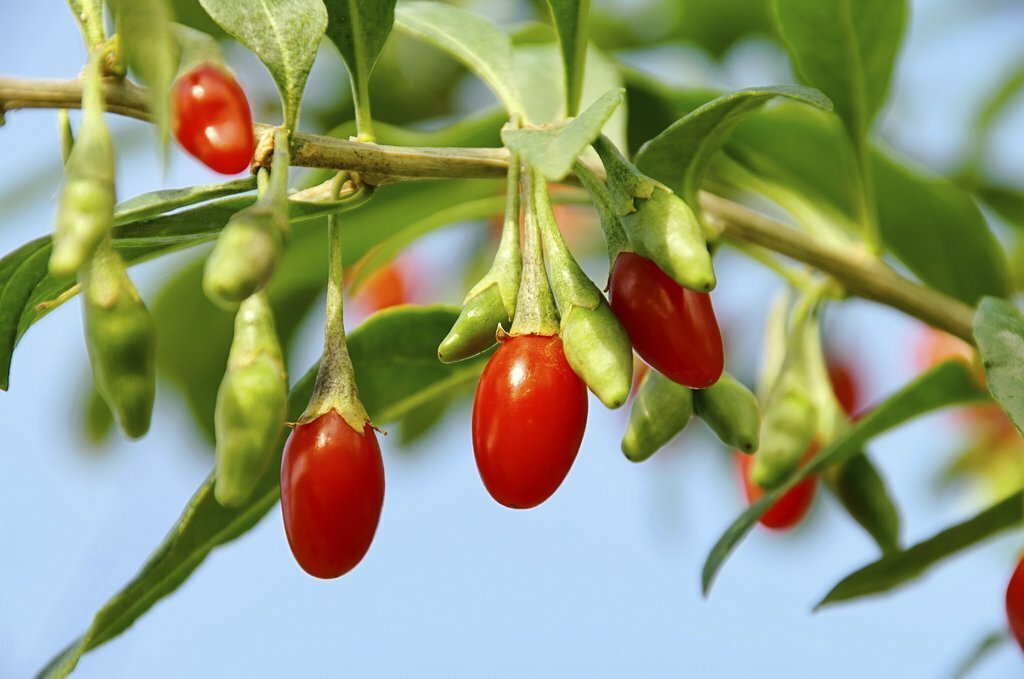
Native to China and Tibet, lycium barbarum , or prickly wolfberry , is a hardy, easy-to-grow shrub from the nightshade family.
Cultivated throughout Asia, this Asian cousin of the tomato can measure between 2 and 3 meters in height, for 1.5 m of spreading, and produces the famous gojis , these fruits with a thousand and one virtues.
Goji berries
The port of the Goji is quite loose; its branches go a little in all directions. Its lance-shaped grey-green leaves are very leathery.
The purple flowers, from May to July, are followed from August to October by edible orange-red fruits with a cherry and cranberry flavor.
Where to grow goji?
The Barbary wolfberry grows in all soils, well drained, non-acidic.
It appreciates a hot and sunny exposure. Easy to grow in our latitudes, it also adapts to continental climates and cold winters, necessary for the preparation of its flowering and tolerates spray well.

It produces many berries, even in our climates.
How to plant goji?
Dig a hole 40 centimeters in all directions, loosen the bottom, and incorporate one to two handfuls of compost and sand.
Unpot the plant and set up the shrub in its hole, straight.
Backfill the hole with the extracted soil, possibly adding a handful of lime to increase its pH.
Should it be pruned?
As the goji fruits on the wood of the year, it is preferable to maintain a tufted form which favors the new fruit-bearing shoots. This structure pruning should be carried out in winter. Do not prune it during vegetation, at the risk of delaying fruiting.
When to harvest gojis ?
Its beautiful light blue to mauve flowers in July give way to small berries ( gojis ), resembling elongated red-orange cherries for the end of summer, from August to October depending on the region.
How to multiply it?
When it pleases, goji is potentially invasive because of its spontaneous shoots or sowing.
2 species of Lycium
They are 2 in number.
- Lycium chinensis , the Chinese wolfberry , is the most common species. Although vigorous, it is quite sensitive to powdery mildew.
- Lycium barbarum is a wolfberry with more elongated fruits with even more fruiting.
National Treasure of Tibet
Sources of antioxidants, minerals (iron, potassium), calcium (3 times more than milk), vitamins (A, B and 7 times more vitamin C than an orange for example), trace elements , beta-carotene, polysaccharides and rich in omega-3, these fruits are credited with many medicinal properties.
Gojis are found in dried form or in juice, pure or mixed with other fruits to fight against cellular aging. This is why goji is given the nickname key to youth or key to eternal youth !

